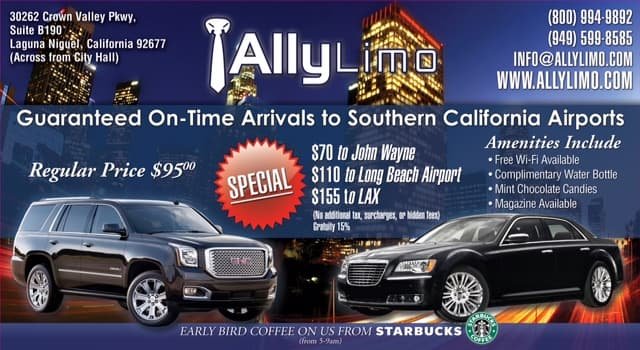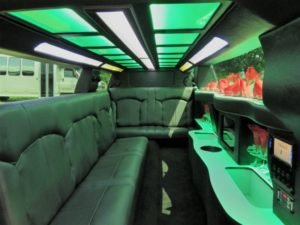Have you ever wondered what sets a limousine apart from an SUV? Well, here’s an interesting fact for you: while both vehicles are known for their luxurious features, the differences between them are quite distinct.
When it comes to the differences between a limousine and an SUV, it’s important to consider their origins. Limousines trace their roots back to the early 1900s when they were first used to transport wealthy individuals. They quickly became a symbol of extravagance, with their elongated body style and luxurious interiors. On the other hand, SUVs, short for Sports Utility Vehicles, gained popularity in the 1990s due to their versatility and ruggedness. They were designed to offer a balance between off-road capabilities and passenger comfort, making them a popular choice for both urban and outdoor adventures. Today, both limousines and SUVs continue to cater to different preferences and needs, providing unique experiences for passengers across the globe.
When comparing a limousine and an SUV, there are several key differences to consider. Firstly, size: limousines are typically longer and can accommodate more passengers, while SUVs are more compact and versatile. Secondly, purpose: limousines are often used for luxury transportation and events, while SUVs are commonly used for everyday commuting and family activities. Additionally, features such as seating arrangement, amenities, and overall style vary between the two. Understanding these distinctions will help you choose the right vehicle for your needs.

What is the Difference Between a Limousine and a SUV?
In the world of automobiles, there are various types of vehicles that cater to different needs and preferences. Two popular choices among those who desire luxury and space are the limousine and the SUV. While both offer a certain level of comfort and elegance, they have distinct features that set them apart. In this article, we will explore the key differences between a limousine and an SUV, allowing you to make an informed decision when choosing the right vehicle for your needs.
1. Design and Size
A limousine is often associated with elegance, luxury, and sophistication. It is a long vehicle designed to showcase opulence and grandeur. Limousines typically have a stretched body and come equipped with various amenities such as plush leather seats, ambient lighting, entertainment systems, and a minibar. On the other hand, an SUV, short for Sports Utility Vehicle, is characterized by its larger frame, higher ground clearance, and a boxy shape. SUVs offer more interior space, making them suitable for families or individuals who require ample room for passengers and cargo.
The design of a limousine focuses on providing a luxurious and comfortable experience for its occupants. It often features a partition separating the driver from the passengers, providing privacy. SUVs, on the other hand, are designed to be versatile. They can handle various terrains and weather conditions, making them suitable for both urban and off-road adventures. SUVs usually have a taller roofline and are equipped with features like four-wheel drive and towing capabilities.
In summary, while both a limousine and an SUV offer different design elements, the former prioritizes luxury and exclusivity, while the latter focuses on versatility and practicality.
2. Seating Capacity and Arrangement
The seating capacity and arrangement differ significantly between a limousine and an SUV. A typical limousine can accommodate a larger number of passengers compared to an SUV. Limousines often have a seating capacity ranging from 6 to 20 people, depending on the length of the vehicle. The seating arrangement in a limousine is usually in a row or side-facing configuration, allowing passengers to face each other and engage in conversation. The interior of a limousine is designed to provide utmost comfort and luxury to its occupants.
On the other hand, an SUV usually has a maximum seating capacity of 7 to 9 individuals, depending on the model. The seating arrangement in SUVs is more conventional, with rows of seats facing forward. SUVs focus on providing a comfortable and spacious environment for passengers, making them ideal for families or groups who need ample legroom and storage space.
In summary, the seating capacity and arrangement in a limousine are designed to create a social and luxurious experience, while an SUV focuses on practicality and accommodating a smaller number of passengers with the convenience of additional cargo space.
3. Usage and Purpose
The primary usage and purpose of a limousine and an SUV also differ based on their design and features. Limousines are often associated with special occasions, such as weddings, proms, or corporate events. They are preferred by individuals who seek luxury and wish to make a grand entrance. Limousine services also cater to airport transfers and chauffeur-driven experiences, offering a premium level of comfort and style.
SUVs, on the other hand, are considered multi-purpose vehicles suitable for various everyday activities. They are popular among families as they provide ample seating and cargo space, making them apt for road trips, family outings, and daily commuting. SUVs offer versatility, allowing individuals to navigate different terrains and weather conditions comfortably. With their towing capabilities, they are also suitable for those who require additional cargo capacity.
In summary, a limousine is associated with luxury events and exclusive transportation, while an SUV serves as an everyday vehicle with a focus on practicality and versatility.
4. Features and Amenities
When comparing the features and amenities, both a limousine and an SUV offer a range of options to cater to different preferences. Limousines provide a lavish experience by offering amenities such as leather seats, entertainment systems, soundproofing, champagne bars, and mood lighting. Some high-end limousines even come equipped with hot tubs and mini dance floors. These luxurious features aim to create a memorable and extravagant experience for passengers.
SUVs, on the other hand, offer a different set of features to enhance comfort and convenience. Many modern SUVs come equipped with advanced safety features such as collision warning systems, adaptive cruise control, and blind spot monitoring. They also offer technologies like touchscreen infotainment systems, navigation systems, rear-seat entertainment, and smartphone integration. SUVs are designed to provide a comfortable and safe experience for passengers during everyday travels.
In summary, while both a limousine and an SUV offer various features and amenities, the former focuses on luxurious elements to create a unique experience, while the latter prioritizes safety, convenience, and modern technologies.
5. Cost and Ownership
The cost and ownership experience of a limousine and an SUV also differentiate the two. Owning a limousine requires significant investment due to its luxurious design, customizations, and maintenance costs. Limousines are commonly operated by professional transportation companies or hired for special events. Renting a limousine for a few hours or an entire day is a popular option for those who wish to experience luxury transportation without the commitment of ownership.
On the other hand, SUVs are more accessible in terms of cost and ownership. They are available in various price ranges, allowing individuals to choose a model that fits their budget and requirements. SUVs also have a wider range of options, from compact to full-size models, catering to different preferences and price points. Thus, owning an SUV is more feasible for individuals or families seeking a versatile vehicle for everyday use.
In summary, owning a limousine is a significant investment and is common among professional transportation companies, while owning an SUV is more practical and accessible for individual buyers, providing a range of options to suit different budgets.
A Closer Look Into Fuel Efficiency
When it comes to comparing the fuel efficiency of a limousine and an SUV, several factors come into play. Limousines are known for their elongated design, which typically results in higher fuel consumption. The heavy weight and larger engine capacity of limousines contribute to a reduced fuel efficiency compared to smaller vehicles. Additionally, limousines often use powerful engines to provide a smooth and comfortable ride, further impacting fuel consumption.
SUVs, on the other hand, vary in terms of fuel efficiency depending on their size, weight, and engine. Compact or hybrid SUV models tend to offer better fuel efficiency than larger, full-size SUVs. Advances in technology have allowed many SUVs to be more fuel-efficient compared to previous generations. Manufacturers have introduced hybrid and electric SUV models that offer even better fuel economy, reducing the overall environmental impact.
It is important to note that fuel efficiency can also vary based on driving habits, road conditions, and the overall maintenance of the vehicle. Regular maintenance, proper tire inflation, and adherence to recommended driving patterns can help optimize fuel efficiency for both limousines and SUVs.
Benefits of a Limousine
1. Luxurious and extravagant experience for special occasions and events.
2. Professional chauffeur service providing a stress-free travel experience.
3. Privacy and exclusivity with the option for partitioned cabins.
Benefits of an SUV
1. Versatility and practicality for everyday use and various terrains.
2. Ample seating and cargo space, suitable for families or individuals with active lifestyles.
3. Availability in various price ranges and options, allowing for greater accessibility.
Conclusion:
In conclusion, the difference between a limousine and an SUV lies in their design, size, seating capacity, usage, features, and ownership experience. A limousine showcases elegance and luxury, providing a lavish experience for special events, while an SUV prioritizes versatility, space, and practicality for everyday use. Understanding these differences will help you make an informed decision when choosing between a limousine and an SUV, based on your preferences, needs, and budget.
## Key Takeaways:
1. Limousines are luxury vehicles designed for comfort and elegance, while SUVs are versatile and practical vehicles designed for off-road capabilities and cargo space.
2. Limousines are typically longer and have a larger seating capacity, while SUVs are usually smaller and can seat fewer people.
3. Limousines often feature amenities such as mini-bars, entertainment systems, and plush seating, while SUVs focus more on functionality and ruggedness.
4. Limousines are commonly used for special events, weddings, and VIP transportation, while SUVs are popular among families and outdoor enthusiasts.
5. The cost of owning and maintaining a limousine is generally higher than that of an SUV due to their luxury features and higher-end materials.
Frequently Asked Questions
Translate this heading in “English” Language.
1. What are the main differences between a limousine and an SUV?
A limousine and an SUV may seem similar in terms of their size and luxurious features, but there are some key differences between the two. One main difference is the length of the vehicle. Limousines are typically longer than SUVs, allowing for more spacious seating arrangements and additional amenities. SUVs, on the other hand, have a more compact design, accommodating fewer passengers.
Another significant difference is the purpose for which these vehicles are typically used. Limousines are commonly associated with events such as weddings, proms, or corporate functions, where a chauffeur-driven vehicle is desired for its elegance and sophistication. SUVs, on the other hand, are often chosen for their versatility and practicality, making them a popular choice for family trips or outdoor adventures.
2. How do their interiors differ?
When it comes to the interiors, limousines and SUVs offer distinct features to cater to different preferences. Limousines are known for their plush and luxurious interiors. They often feature leather upholstery, comfortable seating, ambient lighting, and various entertainment options such as TV screens and sound systems. These amenities create a lavish and relaxing environment for passengers to enjoy.
In contrast, SUVs prioritize functionality and versatility in their interiors. They usually have more cargo space compared to limousines, making them suitable for transporting luggage, sports equipment, or large groups. SUVs often have folding seats to accommodate flexible seating configurations, and some models may include features such as built-in navigation systems, Bluetooth connectivity, and advanced safety technologies.
3. Which one offers a smoother ride?
Both limousines and SUVs are designed to provide a comfortable ride, but there are slight differences in their suspension systems that can affect the smoothness of the journey. Limousines typically have a longer wheelbase and a softer suspension, which helps absorb bumps and vibrations on the road, resulting in a smoother ride for the passengers.
SUVs, on the other hand, have a shorter wheelbase and a sturdier suspension to handle different terrains. While SUVs may not offer the same level of smoothness as limousines, they are designed to handle rough roads and off-road conditions more effectively. Modern SUV models often come equipped with features such as adaptive suspensions or air suspensions that can enhance the overall ride quality.
4. What about fuel efficiency?
When it comes to fuel efficiency, SUVs generally have a larger engine size and higher fuel consumption compared to limousines. Due to their larger size and often four-wheel-drive capabilities, SUVs require more energy to move, resulting in lower fuel efficiency. However, advancements in technology have led to the development of hybrid or electric SUV models, which offer improved fuel efficiency and reduced emissions.
On the other hand, limousines often feature more streamlined designs and lighter bodies compared to SUVs, which can contribute to better fuel efficiency. Additionally, some limousines may be equipped with engines that are specifically optimized for efficiency, helping to reduce fuel consumption. However, it’s important to note that fuel efficiency can vary depending on the specific make and model of both limousines and SUVs.
5. What are the cost differences between a limousine and an SUV?
When considering the cost differences between a limousine and an SUV, several factors come into play. Limousines are generally associated with luxury, and their prices usually reflect that. The cost of purchasing a new limousine can range from tens of thousands to several hundred thousand dollars, depending on the model and customization options.
On the other hand, SUVs tend to have a wider range of price points, offering more affordable options as well as premium, high-end models. The cost of purchasing an SUV can vary depending on the brand, size, features, and trim levels. Generally, SUVs are more accessible to a wider range of budgets compared to limousines. Additionally, it’s worth considering factors such as maintenance costs, insurance premiums, and fuel expenses when comparing the overall cost of ownership between the two vehicle types.






